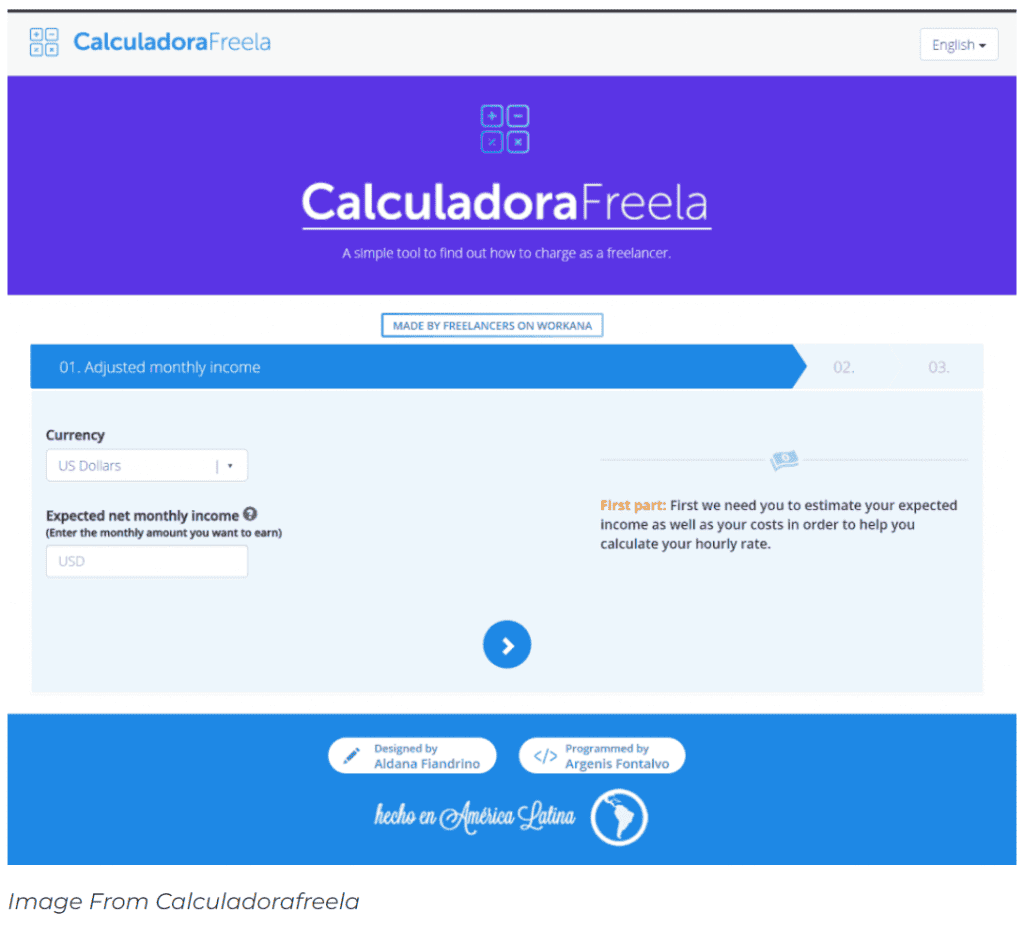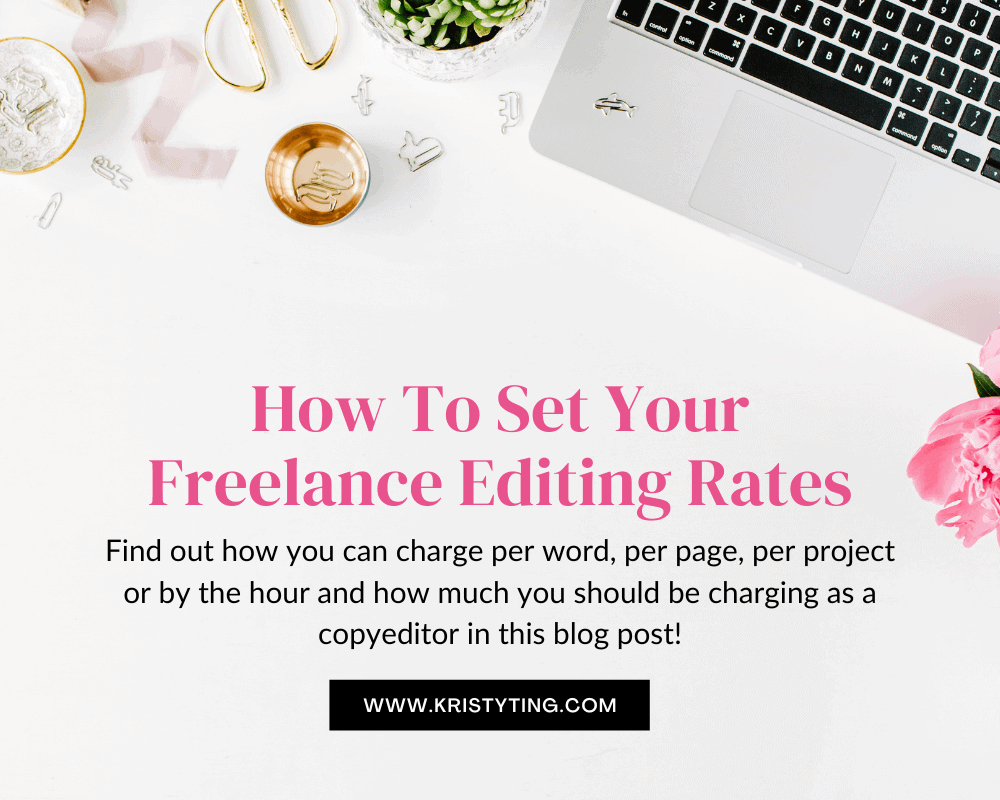This post may contain affiliate links. If you use these links to buy something we may earn a commission at no extra cost to you. Thank you for your support!
Looking to be a copy editor, or are you already one? According to Zippia.com, there are currently over 7,000 copyeditors/proofreaders in the United States alone in 2022.
The average salary for a copy editor as of August 2022 is $51,940. The going rate for base salaries is between $38k to $76k annually. However, this figure can be much higher depending on the number of projects you take on. This post will walk you through how you should charge your clients based on your experience, skills, and portfolio. You’ll also learn how to raise your rates as time goes on.
This blog post will guide you through what a copy editor is, and how you should set your freelance copy editing rates.

What Is A Copy Editor?
A copy editor is a professional in charge of refining the final draft of the content before it is sent for publishing.
Copy editors will proofread to ensure there are no grammatical, punctuation, and spelling mistakes. The content also has to follow the recommended guidelines, style guide, and structure in order to have the content convey the company’s tone and brand.
Copy editors are different from proofreaders in the sense that they will have to double-check numerical figures, facts, and data that are inside of the content to ensure accuracy. On top of that, they come up with headlines, manage the layout and decide if the images inside the content are relevant and in the right place.
Some copy editors also work with a team of writers and editors to ensure that the best and most accurate content is created and published.
3 Steps To Setting Up Your Freelance Copy Editing Rates

1. 4 ways To Price Your Copy Editing Work:
- Per Word
- Per Hour
- Per Project
- Per Page
Per Word
According to Wave, the industry standard of charging when it comes to copyediting is to charge per word.
If you are going to take on a book that has, say, 50,000 words, then you’ll be paid that number multiplied by the number of words you’ll be proofreading and copyediting regardless of how many hours or days this work is going to take you.
If the draft that is given to you is less polished than expected, it may take you more time to copyedit it, and vice versa.
Total Rate To Charge: Per-word rate x Number of words
Per Page
The Editorial Freelancers Association (EFA) suggests that a copyeditor be paid between $30 to $45 per hour for 4 to 6 pages’ worth of work.
This works out to charging between $5 to $11.25 per page.
The range is due to the different types of content you’ll be copyediting. There are different rates for differing content, which will be explained in more detail below.
Most writers will know the number of words they’ll be editing, but not the number of pages. If you are going to charge per page, you should find out the number of words there are on each page.
If you’re used to editing 200 words per page but in this case, there are significantly more words per page, then you should adjust and charge higher rates accordingly.
Total Rate To Charge: Per-page rate (adjusted accordingly) x Page Count
Per Hour
As you can probably tell, this method of charging requires more experience. You should be able to estimate the number of hours you’ll need to give a quote based on the number of words and pages of the full manuscript, give or take a few so that the client will know that the amount of time you quoted and the amount of time you used to wrap up the entire manuscript are quite close.
As mentioned prior, the average rates per hour are between $30 to $45 (can be higher or lower).
Total Rate To Charge: Hourly rate x Number of Hours
Per Project
Charging per project is immensely popular. This is because once you are used to copyediting and have had several clients, you will know what freelance editing rates to charge per project based on your estimate of how long the project will take and how many words you will need to proofread and edit.
Charging per project also allows you to finish your work on your own time, within the deadline you have given to the client. Hence there is no need to zoom in on the word count or pages or hours involved. For example, you can charge a flat rate of $4,000 for a 1,000-page book, and then be free to take on more clients and projects knowing full well that you’ll be available after a certain timeline.
An experienced editor will be able to give accurate quotes for each project with each new client after some time. The trick is to not underestimate the time frame of the assignment and the effort you’ll be needing, otherwise, you’ll end up giving a lower price and this may lead to potential problems, ie being paid too little for too much work.
2. The Type Of Editing You Are Doing
Your rates will also depend on the types of editing services you are offering, whether it’s on academic journals, a book, or even simple edits such as menus and articles. Here are some examples of the different types of editing work you may be doing:
Line Editing
Line editing is less about looking for grammatical and spelling errors, and more about ensuring the words and structure have a good flow and are easily understood. Rates range between $46-$50 per hour.
Copyediting
Copyediting includes what is done in line editing, in addition to checking for spelling mistakes, grammatical errors and punctuation errors.
Rates range between $40 to $60 per hour depending on the material. Subject matter that contains legal or medical jargon, for example, may require more professional editing, higher skilled copywriters, and hence, higher editorial rates. In such cases, some clients may require a sample edit to ensure that you know the correct terms and words to use.
Substantive Editing
Substantive editing typically involves fictitious content. You read and double-check the storyline to see if the flow and character development make sense. You find loopholes and give your feedback to the author. You may even do basic fact-checking.
You can charge anywhere between $36 to $40 per hour for substantive editing services.
Developmental Editing
Developmental editing rates are usually between $46 to $70 per hour. Here, developmental editors help writers double-check their work from the get-go and not at the end of the work, hence the higher rates. This basically means for every chapter that is written, the developmental editor sees it and gets to work on it almost immediately. This usually requires more commitment and personal time.
To get a good editor who is willing to work with the author or writer to ensure each phase of the content develops well throughout the entire writing process, the client has to be prepared to pay a higher editor cost.
Technical Editing
Another type of document you may be asked to edit is academic work. You’ll be looking at academic journals, technical articles, and even curriculum layouts, for example, one on social sciences.
You’ll need to do a lot of research to ensure the accuracy of the content, facts, and data that are involved. According to Oxford Editing, rates can range anywhere between $50 to $150 per hour, depending on the editor’s level of skills, degree of special expertise, experience, and speed.
Other Types Of Editing
Other types of editing include grant proposals, CVs, cover letters, children’s books and historical fiction. The standard rate for these are usually around $0.13 to $0.16 per word.
Depending on the nature of the work, charges seem to increase based on this order:
Fiction >> Non-fiction >> Historial Fiction >> Literary fiction >> Children’s books >> Business and self help books >> Medical and academic books
3. Factors To Consider When Setting Your Freelance Editing Rates
Research The Market
If you’re unsure of what to charge, do some research and check out what other freelancers are charging for hire on sites such as Upwork, Fiverr, and other freelance writing sites.
Rush Jobs
Rush jobs will always cost extra, due to the extra pressure and time involved. Ensure you adjust your base rate in such circumstances and offer a fair rate in exchange for your services. As a professional editor, this is the only way you can ensure you do not get shortchanged.
Always be confident in your content editing and writing skills.
Business Costs
If you’re hiring and outsourcing your work, your rates should reflect your business costs and what you’re paying to get quality work done at your end. You can hire someone to do your editing job and another to proofread, and basically have different editors offering different editorial services, and these are all business costs to consider.
Additional Services
Some editors charge extra for proofreading services (you will see it listed as a separate charge on the payment invoice) – because proofreading is a skillset of its own.
Some break down their rates based on the different types of editing they’ll be doing and the writing process that is involved, if any.
Tools You Can Use To Set Your Freelance Editing Rates
A popular tool is the freelance rate calculator. Some are pretty complicated and include taxes and other bills.
Here is an example: Google’s Freelance Rate Calculator

Other tools include bookkeeping and invoicing tools, such as Airtable, Zoho, Clockify, and Invoicely.
3 Ways To Increase The Value Of Your Editorial Services
1. Get Certified.
This is by no means a requirement, but when you take up a course, you are able to learn more, instill more confidence in your clients and offer more value and knowledge. Popular courses include those from Knowadays and Udemy.
2. Offer Package Services.
This means offering a stack of services together, such as editing, proofreading, and copyediting in a package. Or, offer only copyediting but in a bundle offer of 3 books instead of 1.
3. Set Up A Proper Portfolio and Invoicing System
Have a proper website or page where people can find you, see the services you offer, and check out your rates. If possible, add in social proof as often as you can to showcase the variety of work you’ve done over time.
Wrapping Up
At this point, you should have a much clearer idea of how you can charge and what your rates should be based on the type of content you’ll be editing. Revise your rates periodically (for example, every 6 months) and when you’ve gained more experience and expertise.
Payscale shows (on average) the salary a freelance copyeditor can get based on experience here.

Ready to rock and roll? Hop over here to check out the best hiring sites for freelance editors and writers.





